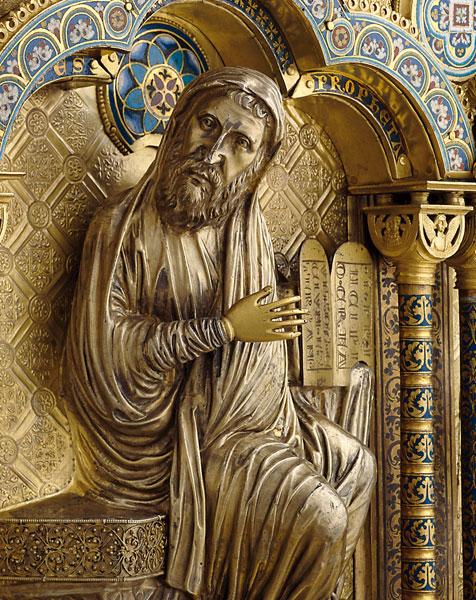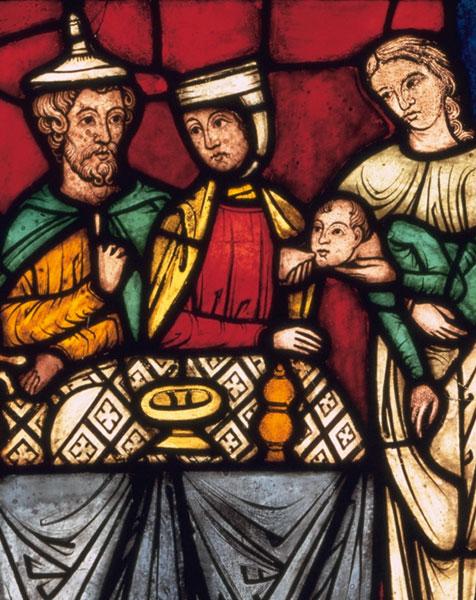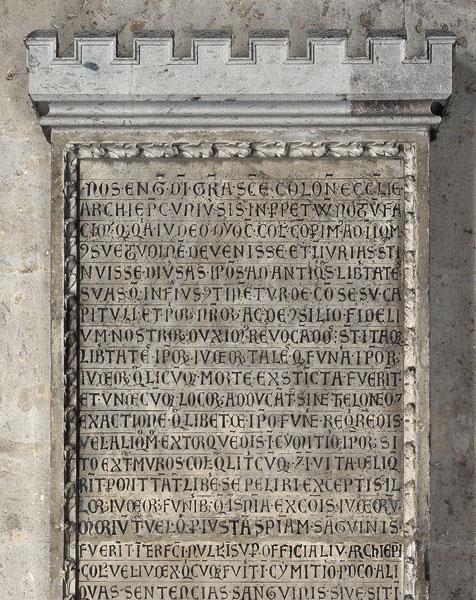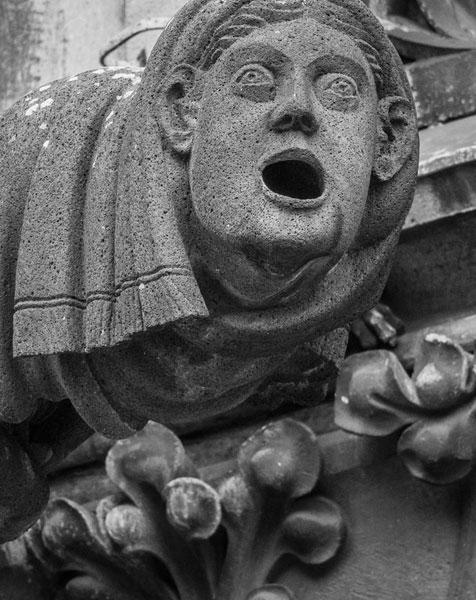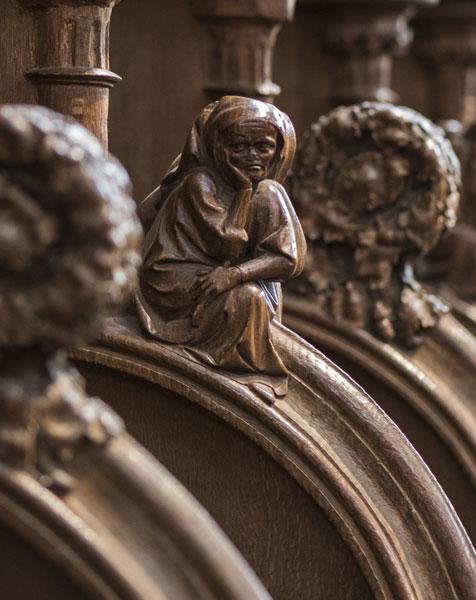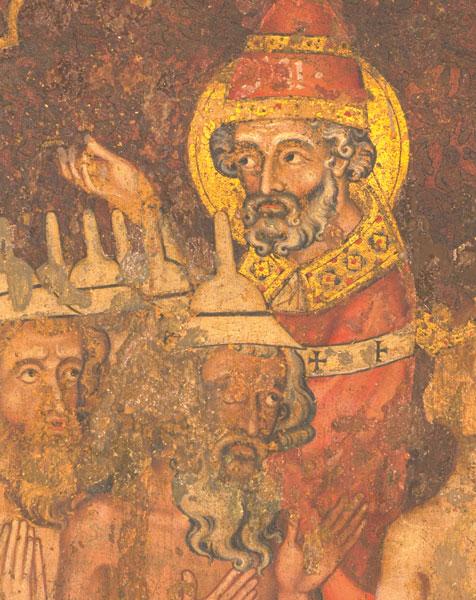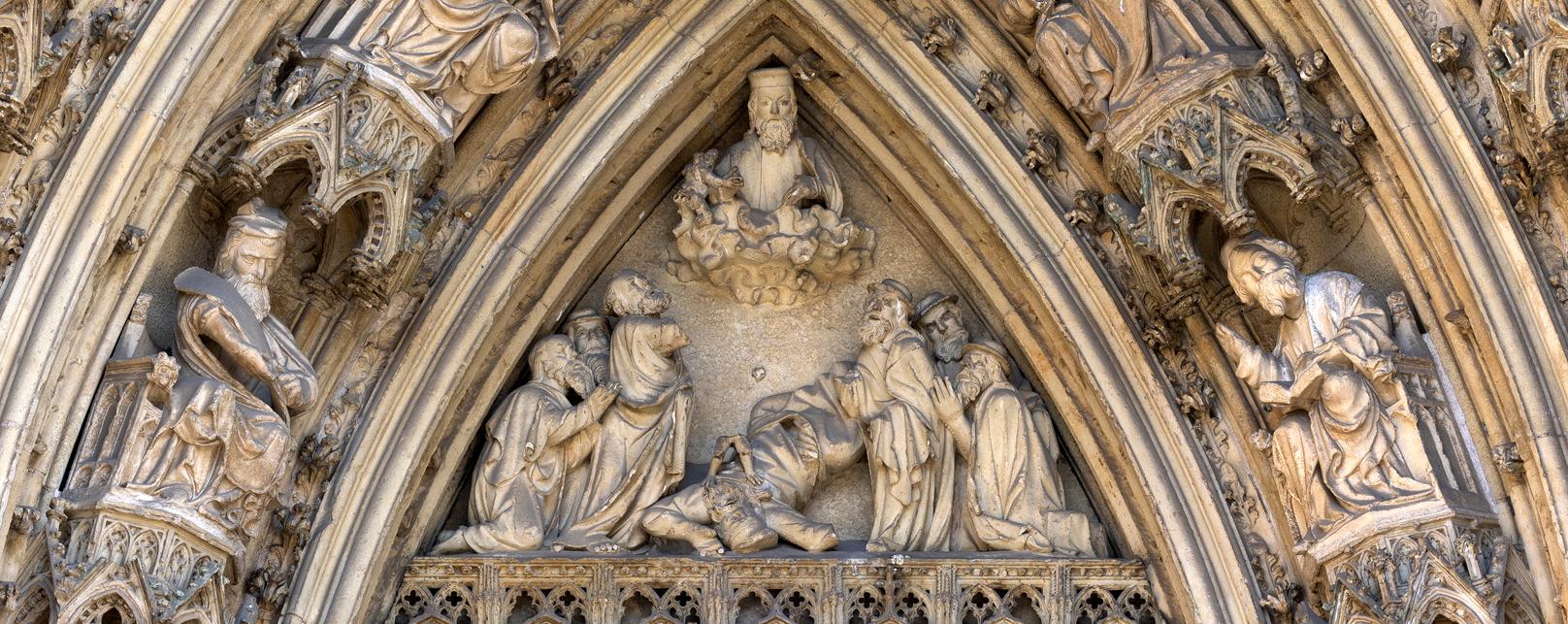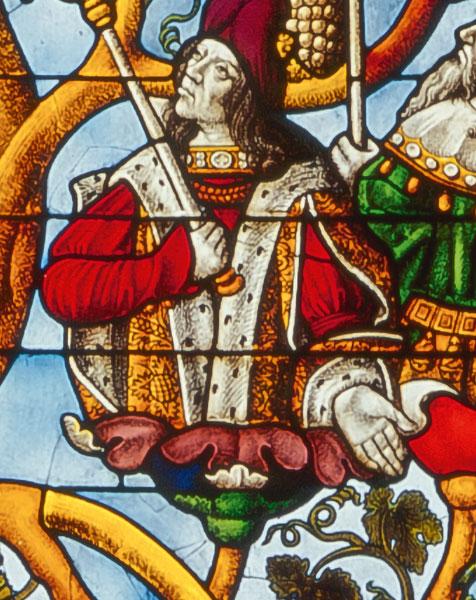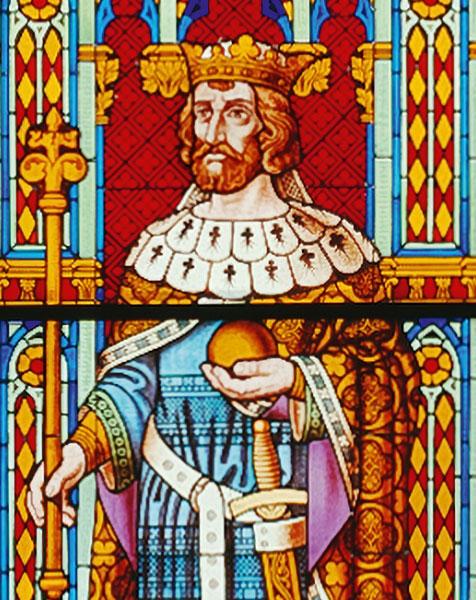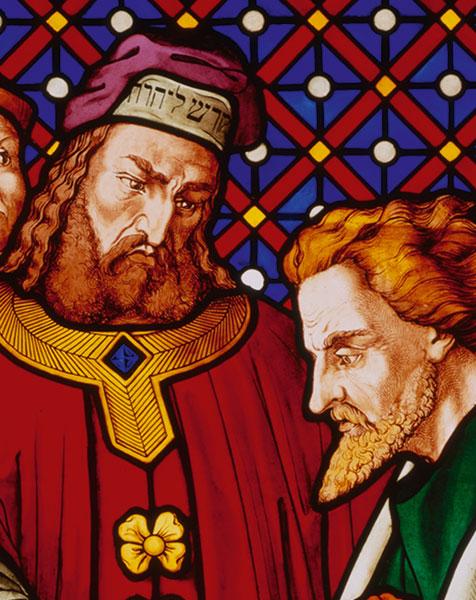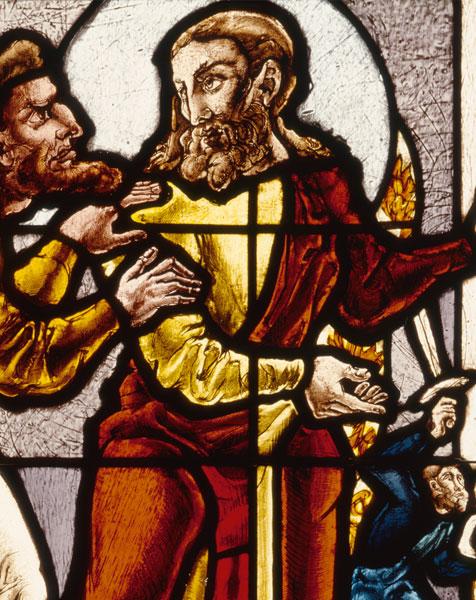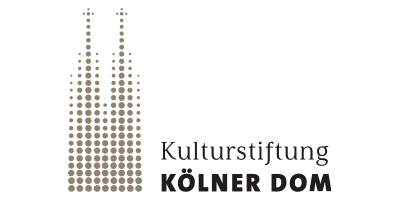
Cologne Cathedral and 'The Jews'-The Annunciation and the Holy Kinship
Two groups of sculptures in the cathedral, both of which were created sometime around 1510, were donated by the same person, Victor of Carben.
The two figures in the Annunciation group—the Archangel Gabriel and the Virgin Mary—are situated on two separate piers in the south transept. The ensemble of the Holy kinship in the Lady Chapel includes several figures: at the centre is an Anna Selbdritt sculpture (an image of St Anne with the Virgin and Child); with Saints Barbara and Joachim on the left and Saints Joseph and Catherine on the right. In other words, the group includes Jesus and his parents (Mary and Joseph), Mary's parents (Anne and Joachim), and Saints Barbara and Catherine, who are identified by their respective attributes, the tower and the wheel.
The donor appears twice in these groups: firstly, kneeing and praying at the feet of the Angel Gabriel in the Annunciation group and secondly, dressed as a cleric and facing towards Mary and the Christ Child in the Anna Selbdritt sculpture. In both cases, the donor is named in the inscription, which is repeated on the base of four of the five sculptures: 'Victor sacerdos olim Judeus' (the priest, Victor, former Jew).
Born into the Jewish faith sometime around 1423, Victor is often referred to as Victor of Carben, after his home town of Karben (or Carben) in what is now the federal state of Hesse. He was allegedly a rabbi, before converting to Christianity and being baptised in 1473 and being ordained a priest a few years later. In 1486, he enrolled at the theological Faculty of the university at Cologne, which was considered conservative. In later years, Victor entered into a disputation with several rabbis in the presence of the archbishop. The controversy about the polemical 1507 document entitled Judenspiegel (literally 'Jews' Mirror'), which was written by convert Johann Pfefferkorn, a resident of Cologne, spread right across Europe. In this document, Pfefferkorn called for the confiscation and burning of the Talmud and other Jewish texts. Victor of Carben, who supported Pfefferkorn's anti-Jewish attitudes, was also a member of a commission that examined the document. Victor of Carben held similar views in his own writings and aggressively called on Jews to adopt the Christian faith. In doing so, he used defamatory, anti-Jewish modes of expression. He died in 1515, just a few years after donating the above-mentioned figures to Cologne Cathedral.
The extravagant and costly donations of Victor of Carben should be seen in this light. His conversion to Christianity and his focus on Judaism also play a major role. The very fact that the description of the donor as 'sacerdos olim Judeus' is repeated several times in both groups speaks volumes. The evidently Marian focus of both groups should be seen as a conscious renunciation of the Jewish religion, which rejects the concept of the virginity and divine motherhood of Mary, and also illustrates the convert's devotion to the Mother of God. Saints Barbara and Catherine were popular saints in the Middle Ages. It is possible that Victor of Carben saw himself as a successor of the two saints, because although born as pagans, both women were later baptised and became martyrs for the Christian faith. With his extravagant donation, Victor of Carben is publicly documenting his complete renunciation of the religion of his ancestors. At the same time, by approving the donation, the Cathedral Chapter is also corroborating its anti-Jewish position in the controversy surrounding Pfefferkorn's opinions.
Joachim Oepen

The donor, Victor of Carben, can be seen kneeling at the feet of the Archangel Gabriel. The Latin inscription on the base reads 'the priest Victor, former Jew'.






